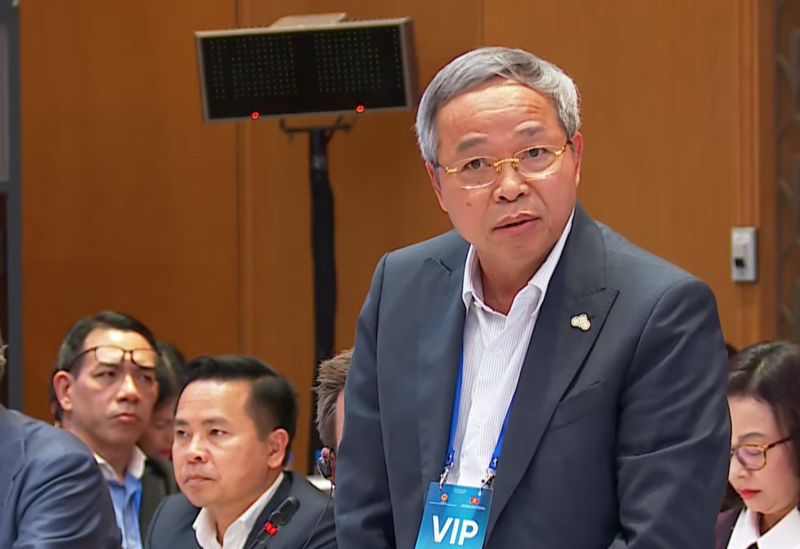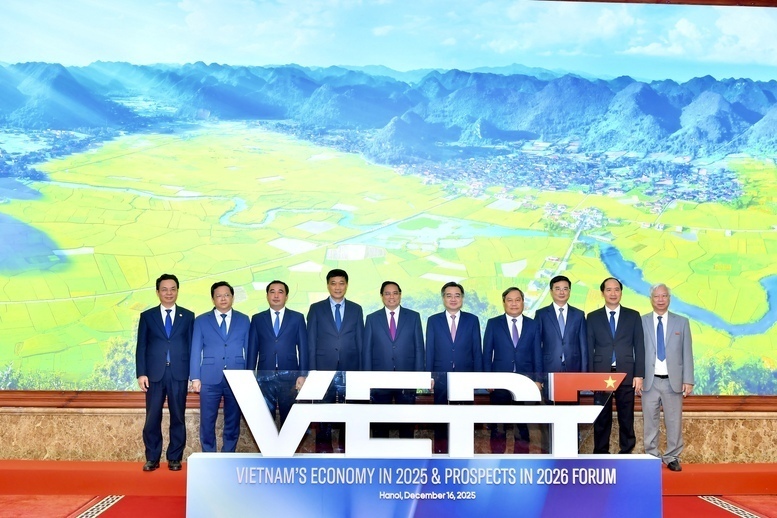
When sustainability is no longer optional for Vietnam’s textile firms
19:05 | 23/03/2025 11:18 | 17/12/2025Trade
Impact of the exemplary rural industrial product selection program
For years, the selection of exemplary rural industrial products has been a cornerstone of Vietnam’s industrial promotion policy. This initiative has unlocked the potential of local materials, skills, and creativity in rural areas, encouraging the adoption of modern technology and equipment while elevating Vietnamese brands in domestic and international markets. By the end of 2024, Vietnam recognized 4,154 products at the provincial level, 2,111 at the regional level and 686 at the national level. These figures reflect the program’s widespread impact and its significant contribution to enhancing the competitiveness of rural enterprises.
Speaking at the workshop, Nguyen Thi Lam Giang, Director of the Bureau of Innovation, Green Transformation, and Industrial Promotion, emphasized: “The selection of exemplary rural industrial products has become a key component of industrial promotion policy, implemented consistently nationwide. Beyond honoring high-value products, the program drives innovation and strengthens the position of Vietnam’s rural industrial products in both domestic and global markets.”
The program’s significance was echoed by representatives from associations and localities. Experts such as Nguyen Nhu Chinh (Vice Chairman of the Vietnam Craft Village Association), Ha Thi Vinh (Vice Chairman of the Vietnam Craft Village Association and Chairman of the Hanoi Handicraft and Craft Village Association), Duong Tuan Cuong (Deputy Head of Policy, Vietnam Cooperative Alliance), and Nguyen Viet Dung (Deputy Director of Phu Tho Department of Industry and Trade) contributed insights, highlighting the collaborative effort among policymakers, experts, and enterprises to integrate rural industrial products into value chains and meet market standards.

Experts and local authorities provided valuable input to refine the draft Circular on selecting exemplary rural industrial products.
The selection program also aligns with the Party’s broader objectives of rural industrialization, modernization, national industrial development, and improving rural livelihoods.
Challenges and the need for reform
Despite its achievements, the selection program faces several challenges. The current four-tier structure (commune, provincial, regional, and national) is increasingly misaligned with the shift to a two-tier government model in many localities, leading to overlapping processes and inefficiencies in time and resources.
Additionally, administrative procedures remain cumbersome and ill-suited to digital transformation. Applications still rely heavily on paper-based processes, lacking a unified online platform, which poses challenges for facilities in remote areas with limited access to information.
Finally, the evaluation criteria are seen as outdated and overly general, failing to differentiate between product categories such as handicrafts, agricultural processing, building materials, or machinery. With modern trends emphasizing innovation, global competitiveness, and sustainability, the criteria need refinement to reflect these priorities.
Workshop participants, including local authorities and associations, proposed streamlining the commune-level selection, granting localities greater flexibility, refining criteria by product group, and digitizing application, scoring, and evaluation processes to ensure transparency and efficiency. They emphasized that the selection process should inspire and motivate, not function as a routine administrative task, and regulations must be simplified to facilitate participation.
These suggestions aim to address shortcomings in circulars 26/2014 and 14/2018 while aligning with the government’s broader goals of administrative reform, decentralization, and digital transformation, particularly in rural areas where flexible mechanisms are needed to unleash potential, foster creativity, improve job quality, and increase farmers’ incomes.
Modernizing selection for a new context
The draft circular presented by the Bureau of Innovation, Green Transformation, and Industrial Promotion seeks to address these challenges, build on existing strengths, and introduce innovations to align with the two-tier government model and digital transformation requirements.
Duong Tuan Cuong, Deputy Head of Policy at the Vietnam Cooperative Alliance, noted: “Issuing a new Circular is essential to provide a favorable legal framework and enhance the effectiveness of the selection process. This is not just about brand promotion but also about encouraging innovation, boosting competitiveness, and expanding markets for Vietnam’s rural industrial products in this new development phase.”
The draft restructures the selection process into three tiers-commune, provincial, and national; with commune and provincial selections held biennially in even years and national selections in odd years to ensure continuity.
Eligible products must be legally produced, meet quality and safety standards, hold intellectual property rights, and have mass-production potential. They are categorized into three groups: handicrafts; processed agricultural, forestry, and aquatic products; and equipment, machinery, spare parts, and industrial products for production and consumption.
Awarded products will receive a certificate valid for 36 months, the right to use the program’s logo, and access to industrial promotion support, media exposure, and development policies. The draft also clarifies the roles, responsibilities, and coordination of facilities, selection councils, judges, and the Bureau.
Nguyen Thi Lam Giang stressed the need for objective and comprehensive evaluations to resolve bottlenecks while ensuring feasibility and consistency across all levels. Following the Hanoi workshop, the Bureau will hold a similar event in Thanh Hoa to gather further input from Central and Southern regions, demonstrating a commitment to refining the draft based on practical insights.
On the same day, participants visited ceramic production facilities in Bat Trang craft village, gaining firsthand insights into production processes, innovation efforts, and challenges faced by local enterprises.

19:05 | 23/03/2025 11:18 | 17/12/2025Trade

19:05 | 23/03/2025 11:17 | 17/12/2025Trade

19:05 | 23/03/2025 09:50 | 17/12/2025Trade

19:05 | 23/03/2025 20:46 | 16/12/2025Industry

19:05 | 23/03/2025 20:41 | 16/12/2025News and Events